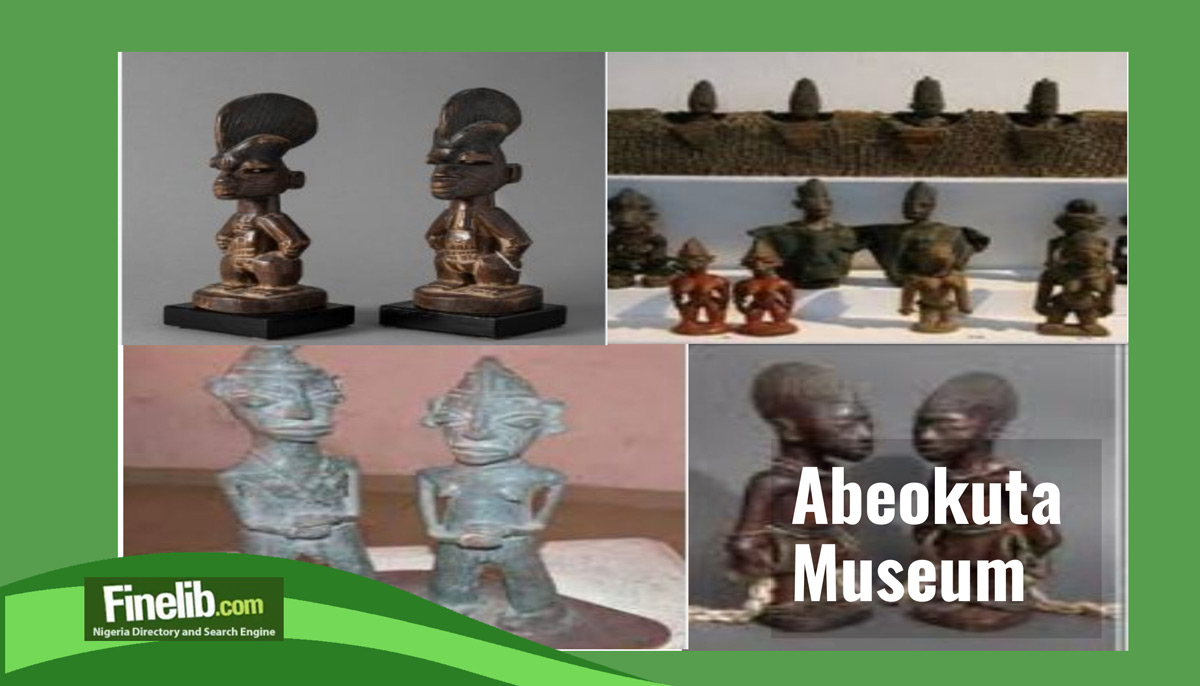Interesting Facts, Attractions, and History of Abeokuta Museum

If you are keen to explore Nigeria’s rich past and soak up some serious history, the Abeokuta Museum in Ogun State is a spot you cannot overlook. Nestled at the base of the famous Olumo Rock, this small but mighty museum is a goldmine of stories, artefacts, and traditions that bring the Egba people’s legacy to life.
Officially known as the Olumo Rock Tourist Complex Museum, it offers a proper glimpse into Nigeria’s southwest heritage, from ancient tools to colonial relics. Whether you are a local from Lagos looking for a weekend outing or a visitor wanting to dig into our roots, this guide unpacks its history, attractions, and why it is worth your time. Let’s step inside and see what makes this place tick.
A Look Back in Time
The Abeokuta Museum has its roots tied to Olumo Rock, a natural fortress that shaped the city around it. The Egba people settled here in the 1830s, fleeing Yoruba civil wars, and turned the rock into a safe haven. Fast forward to 1974, when the museum opened its doors under the National Commission for Museums and Monuments.
Its job? To preserve the Egba’s story and share it with the world. The idea got a big boost in 2006 when Ogun State Governor Gbenga Daniel revamped the Olumo Rock area, adding a lift and sprucing up the museum to pull more visitors. Since then, it has been a steady keeper of Nigeria’s past, sitting proudly in Abeokuta, the “Sunrise within the Rock,” as the city’s name suggests in Yoruba.
Where It Sits
You will find the museum right at the foot of Olumo Rock, in the Ikija area of Abeokuta, Ogun State’s capital. It is about 80 kilometres north of Lagos and 70 kilometres southwest of Ibadan, making it a handy stop in Nigeria’s southwest. Getting there is no stress, hop on a bus from Lagos’s Ojota or Oshodi parks for around 1500 to 2000 naira, and you will roll into Abeokuta’s Kuto or Lafenwa in an hour or so.
From there, a quick keke or okada ride, costing 200 naira, drops you at the museum’s doorstep. If you are driving, the Lagos Ibadan Expressway leads you straight to it, with Olumo Rock looming as your guide. It is a perfect base to explore both the rock and Nigeria’s history in one go.
What You Can Expect to See
The Abeokuta Museum is not some fancy glass building, it is a simple space packed with treasures that tell Nigeria’s tale. Here is the full gist of what awaits you:
- Egba Historical Artefacts
Step in, and you will see tools, pots, and weapons from the Egba’s early days. These bits and bobs, dug up around Olumo Rock, show how they lived, farmed, and fought during the 19th century wars. Think clay bowls, iron blades, and woven baskets, everyday stuff turned into history lessons.
- Traditional Clothing
The museum flaunts Yoruba gear like adire fabrics and aso oke weaves. These bright, hand dyed cloths were big in Egba culture, worn for festivals or just to flex style. You might spot a gele or agbada, a proper nod to Nigeria’s fashion roots that still vibes today.
- Musical Instruments
Fancy some old school tunes? Check out the drums, flutes, and shekeres on display. These wooden and hide beauties were the heartbeat of Egba celebrations, from weddings to naming ceremonies. They show how music has always been part of our blood in Nigeria.
- Colonial Relics
The museum does not shy away from the colonial days. You will find relics like coins, maps, and pics from when the British rolled in after 1893. They mark the shift from Egba independence to colonial rule, a bittersweet chapter laid bare.
- Olumo Rock Exhibit
A corner dives into the rock itself, with photos and drawings of its caves and cliffs. There are small models too, showing how the Egba used it as a hideout. It ties the museum to its giant neighbour, giving you the full gist of why Abeokuta stands where it does.
- Art Gallery
Beyond old stuff, there are paintings and carvings celebrating Yoruba life. You might see a wooden mask or a sketch of a market scene, blending history with creativity. It is a quiet flex of Nigeria’s artistic soul, past and present.
- Cultural Displays
Look out for setups showing Egba traditions, like a mock shrine or a family compound. These bring the past to life, letting you picture how our people prayed, cooked, and gisted under Olumo’s shadow.
Why Nigerians Keep Coming Back
The Abeokuta Museum is a fan favourite for a reason. It is a stone’s throw from Olumo Rock, so you get two bangs for your buck, history and a climb. Locals love it for the pride it stirs, showing off Egba grit and Nigeria’s bigger story.
Families roll in during holidays like Christmas or Sallah, while students drop by for school projects, soaking up facts they cannot get from books alone. Visitors from Lagos or Ibadan make it a day trip, often pairing it with a trek up the rock. It is a chill spot to connect with our roots, whether you are Yoruba or just curious about Nigeria’s depth.
How to Get There and Around
From Lagos, buses leave Ojota or Oshodi daily, landing you in Abeokuta for under 2000 naira. Ibadan folks can grab a ride from Iwo Road for about the same. Once in town, a 200 naira keke or okada gets you to the museum, or drive down the expressway and park at the base.
It is open from 9 a.m. to 5 p.m., though times might shift, so call ahead. Entry is cheap, around 200 naira for adults, 100 naira for kids, a small price for a big dose of history. Wear comfy shoes if you are climbing Olumo too, and bring cash, no fancy POS machines here.
Why It Matters to Nigeria
This museum is more than a building, it is a keeper of our heritage. It shows how the Egba turned a rock into a lifeline, birthing Abeokuta and a legacy of resilience. For Nigeria, it is proof our people were smart and strong long before today’s hustle, a story that boosts our pride.
It pulls in naira too, with visitors spending on tickets, food, and souvenirs, giving Ogun State a little economic lift. Beyond cash, it inspires, maybe you will sketch a mask or tell a tale because of what you see. It is a bridge to our past that keeps us standing tall.
Challenges and Hopes
It is not all smooth sailing, though. The museum is small and a bit rough around the edges, with dim lights and dusty corners needing love. Funding is tight, so displays could use a polish, and some artefacts sit in storage, unseen.
The Olumo lift breaks down sometimes, affecting the whole vibe. But there is light ahead, Ogun State has plans to upgrade the complex, maybe adding digital tours or better signs. If we all shout for it, this spot could shine brighter, a proper showcase for Nigeria’s southwest.
Tips for Your Visit
Hit the museum early to beat the heat and crowds, especially if you are climbing Olumo after. Bring water and snacks like puff puff or chin chin, though vendors nearby sell suya and soft drinks.
Snap pics, the artefacts and rock backdrop are pure gold, but ask staff first. If you are with family, the open space around is great for a breather. Respect the place, it is sacred to some, so no littering or loud wahala. Chat up a guide for 500 naira, they will spill extra gist you won’t find on plaques.
The Bigger Picture
The Abeokuta Museum is Nigeria’s window into its southwest soul. It ties us to the Egba’s survival, Yoruba traditions, and the colonial shift, all under Olumo’s watchful eye. In 2025, as Nigeria grows, this spot keeps our history alive, a quiet but powerful link to who we are.
It is not just Ogun State’s pride, it is a nod to our shared depth, showing the world we have stories worth telling. Small as it is, it packs a punch, blending the old with the now in a way that feels right at home.
Final Thoughts
The Abeokuta Museum is not some flashy tourist trap, it is a real taste of Nigeria’s heart. From Egba tools to colonial coins, it lays out our past with no frills, just facts and feeling. Whether you are here to learn, reflect, or just enjoy a day out, it delivers.
So next time you are near Abeokuta, do not sleep on it, grab your crew, pack some naira, and swing by. It is a piece of our heritage, a slice of our spirit, and a proper Nigerian treasure waiting to wow you. Step in, and let Nigeria’s story unfold right before your eyes!




